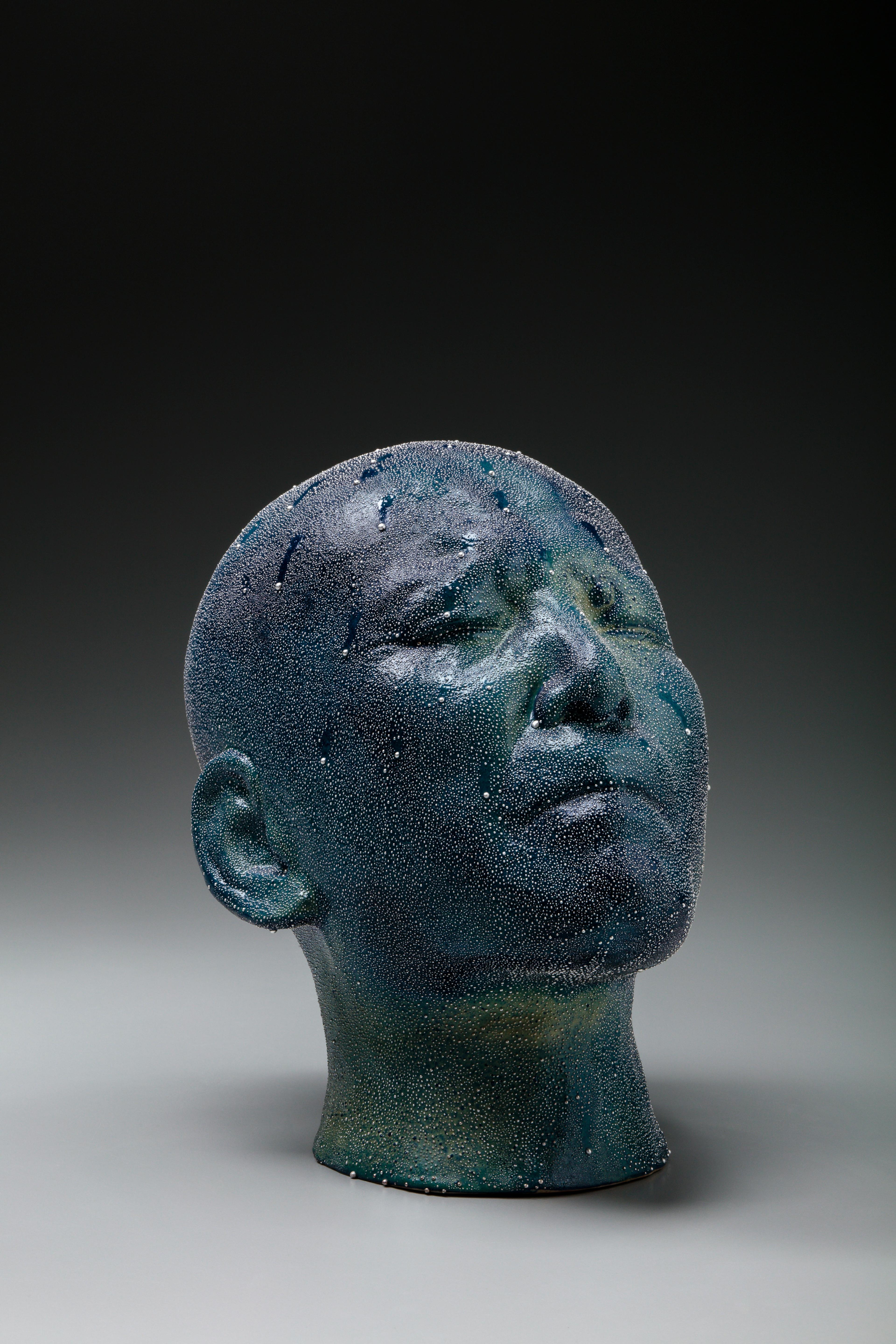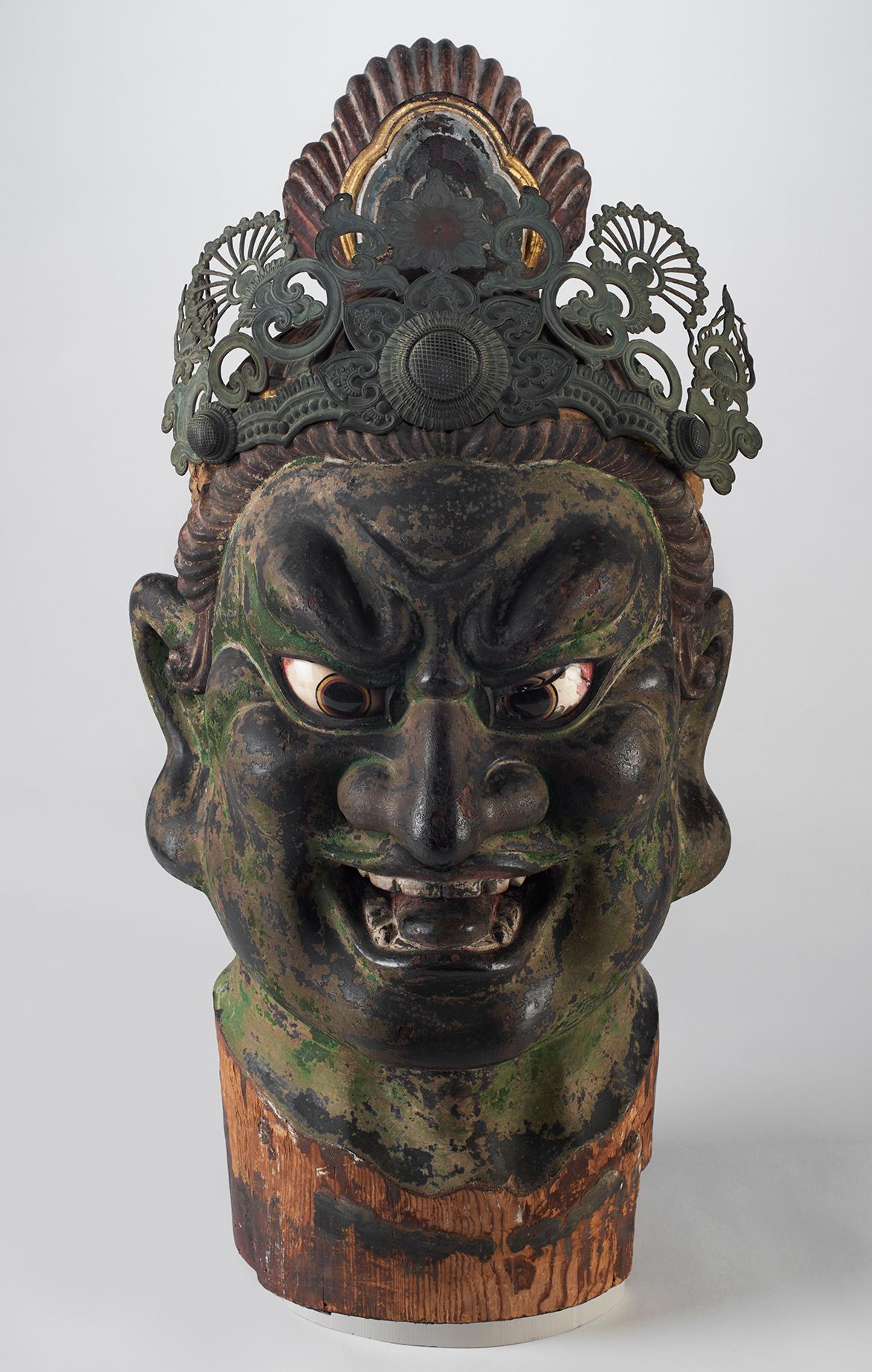Reinvention and Rebirth: On the Kondō Family of Ceramicists’ Living Legacy
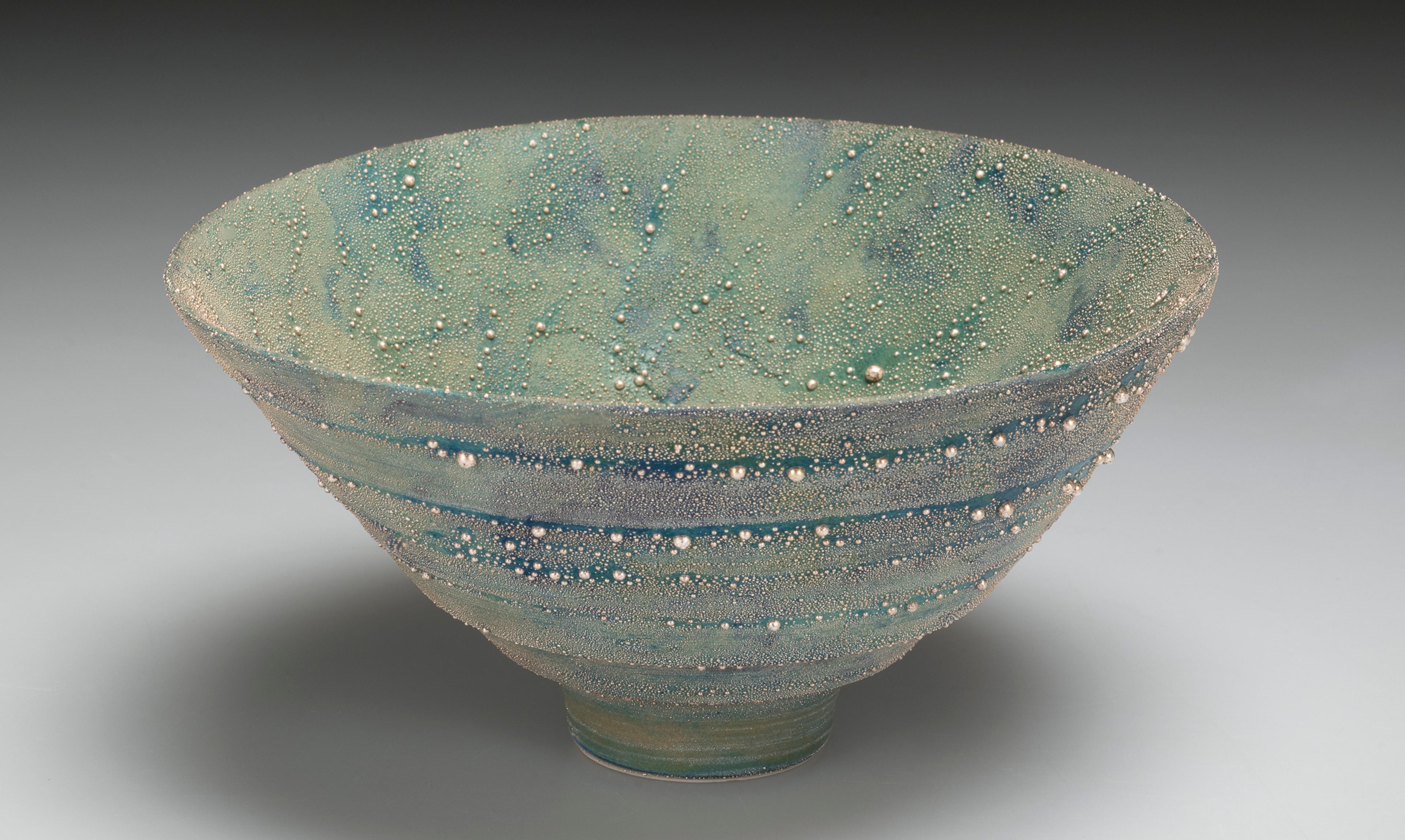
Curator Joan Cummins describes how each generation of the Kondō family has distinguished their innovation—and what we see today.
by Joan Cummins
March 14, 2024
There’s a secret technique behind the dewy texture on artist Kondō Takahiro’s ceramic objects. The effect, which he calls gintekisai, or silver mist, is the result of a special glaze that beads up during firing to look like condensation or rain drops—except that it is metallic. When combined with blocks of colorful cast glass (another favored material), the metallic beads make Kondō’s ceramics feel precious and jewel-like.
It would be so easy for the artist to lean heavily on his invention and just produce one gorgeous piece after another, but he is a thoughtful man, and he uses the silver mist to make us think as well.
When he applies the glaze to cobalt-blue surfaces, the droplets evoke the depth and multiplicity of a galaxy.

When he puts it on a human form, it recalls perspiration, along with the toil and worry that make us sweat.
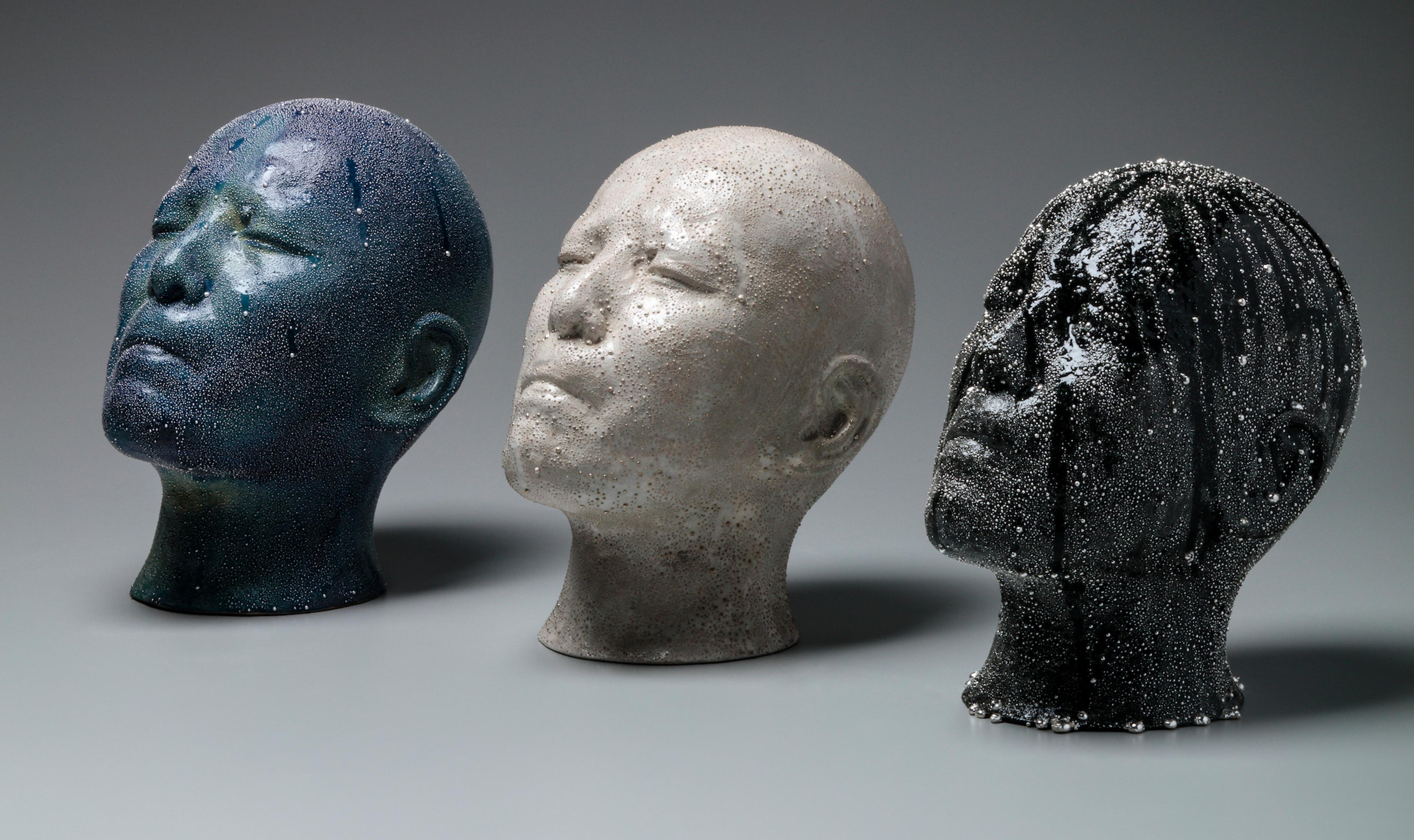
And then sometimes, he doesn’t use the mist at all.
Porcelains in the Mist: The Kondō Family of Ceramicists, the Brooklyn Museum’s current installation featuring ceramic objects by Kondō Takahiro, is on view in our Arts of Japan gallery until December 8. The show takes the first half of its title from the artist’s signature glaze (and from a gorilla movie!). It’s in the second half of the title, which introduces the idea of an artist family, that the installation becomes more complex. Kondō Takahiro’s father, grandfather, and uncle were all artists working in clay, and examples of their work are on view with his. Some of the pieces they produced share aesthetic traits, while others have very little in common.
How much does it matter who an artist’s teacher or parent was?
The idea of legacy in the arts is tricky for both the artist-inheritors and the critics who assess their work. How much does it matter who an artist’s teacher or parent was? In traditional Japanese art, and especially in the field of ceramics, artistic lineages were common, with senior artists passing elements of style and trade secrets to young talents—many of whom adopted the teacher’s family name even if they weren’t related. This system has ensured the survival of several types of ceramic production, but at times it has stifled creativity, as students feel pressure to emulate their mentors rather than investigate new approaches.

Kondō Takahiro’s grandfather, Kondō Yūzō, was designated a Living National Treasure in Japan for his work in blue-and-white porcelain, an art form that had risen to prominence in China more than 600 years earlier. By Yūzō’s time, cobalt-decorated porcelain was mass-produced and found everywhere. But Yūzō breathed new life into an old medium, wheel-throwing his own jars and painting them in bold, loose designs that bore little resemblance to the fussy patterns on department store dishes. Until Yūzō, very few of Japan’s great ceramic artists had chosen to work in porcelain, because it was associated with uniformity and a kind of delicate tidiness that didn’t lend itself to personal expression.
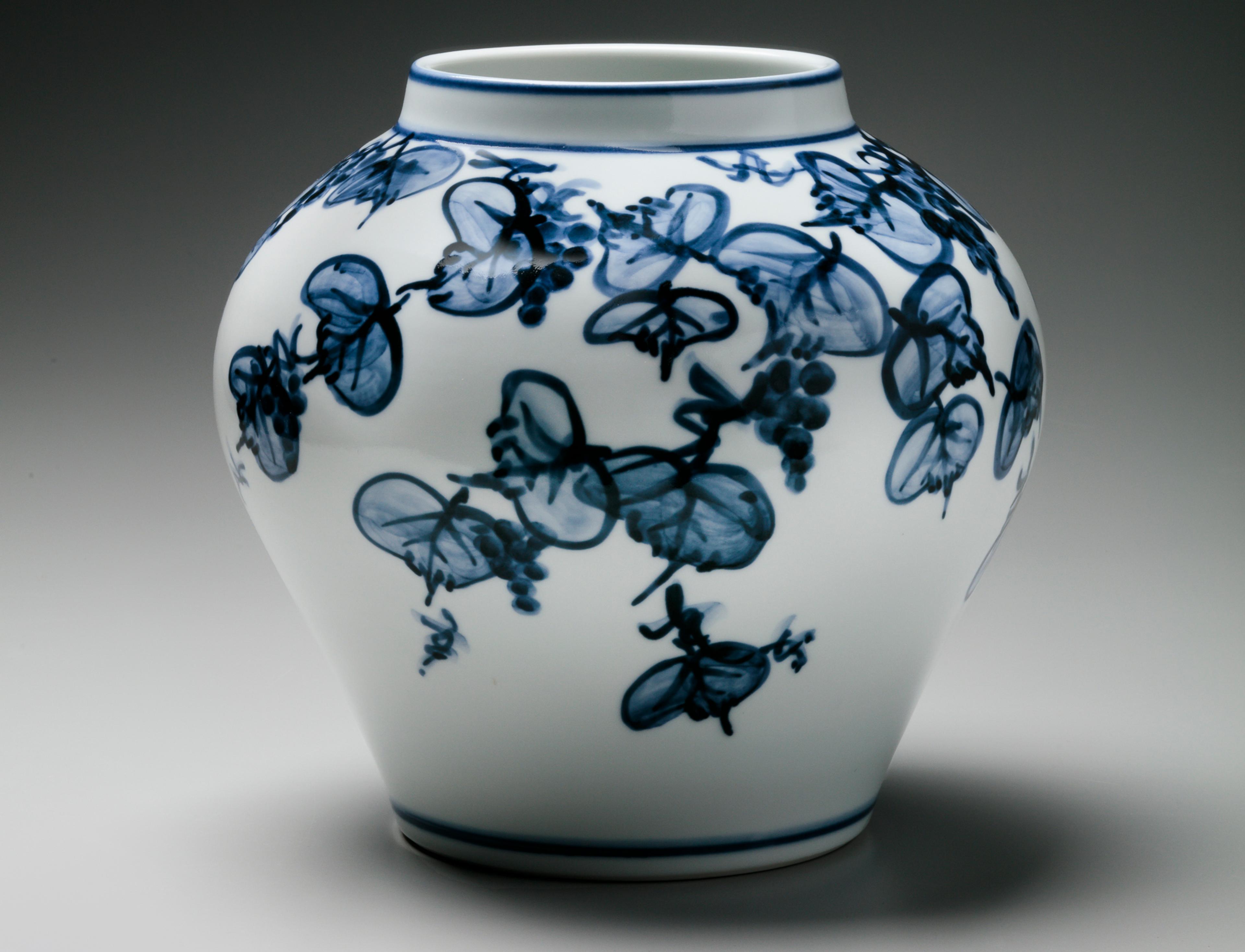
As the first ceramicist in his family, Kondō Yūzō was completely free to choose his own medium and find his own style. The next generation had to grapple with being the sons of a genius. Kondō Hiroshi (Takahiro’s father) followed closely in his father’s footsteps, making beautiful blue-and-white porcelain wares. He was skillful as a painter, but he would always be known as the inheritor of the Kondō style.
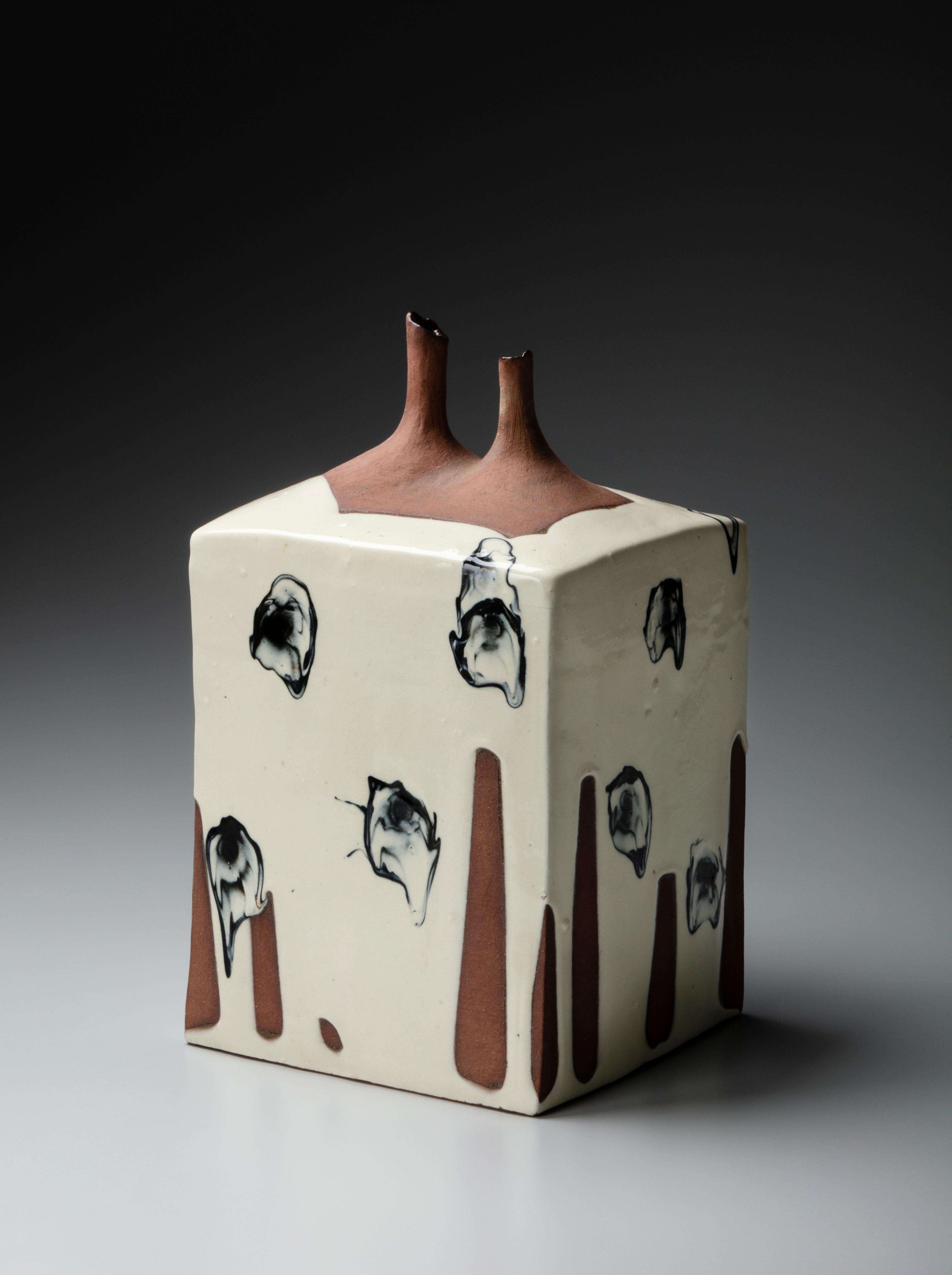
Kondō Yutaka, Takahiro’s uncle, chose to take an entirely different path while remaining in the world of ceramics. His more sculptural vessels are in red stoneware, which is sometimes left exposed under black or white glaze. Yutaka was part of an international mid-century modern ceramics movement and his work shows little (if any) influence from Yūzō. Yutaka did, however, leave a legacy to his nephew, Takahiro, by paving the way for further experimentation—in particular, with work that isn’t thrown on a wheel, or made of porcelain, or decorated with brushwork.
Takahiro is careful to distance himself from the “potter family” model that was once so common in Japan: he was not obligated to become a ceramicist, and in fact he had an earlier career as a table tennis player. When he decided to go into the family trade, he quickly found his own approach, mostly making angular forms from slabs of clay.
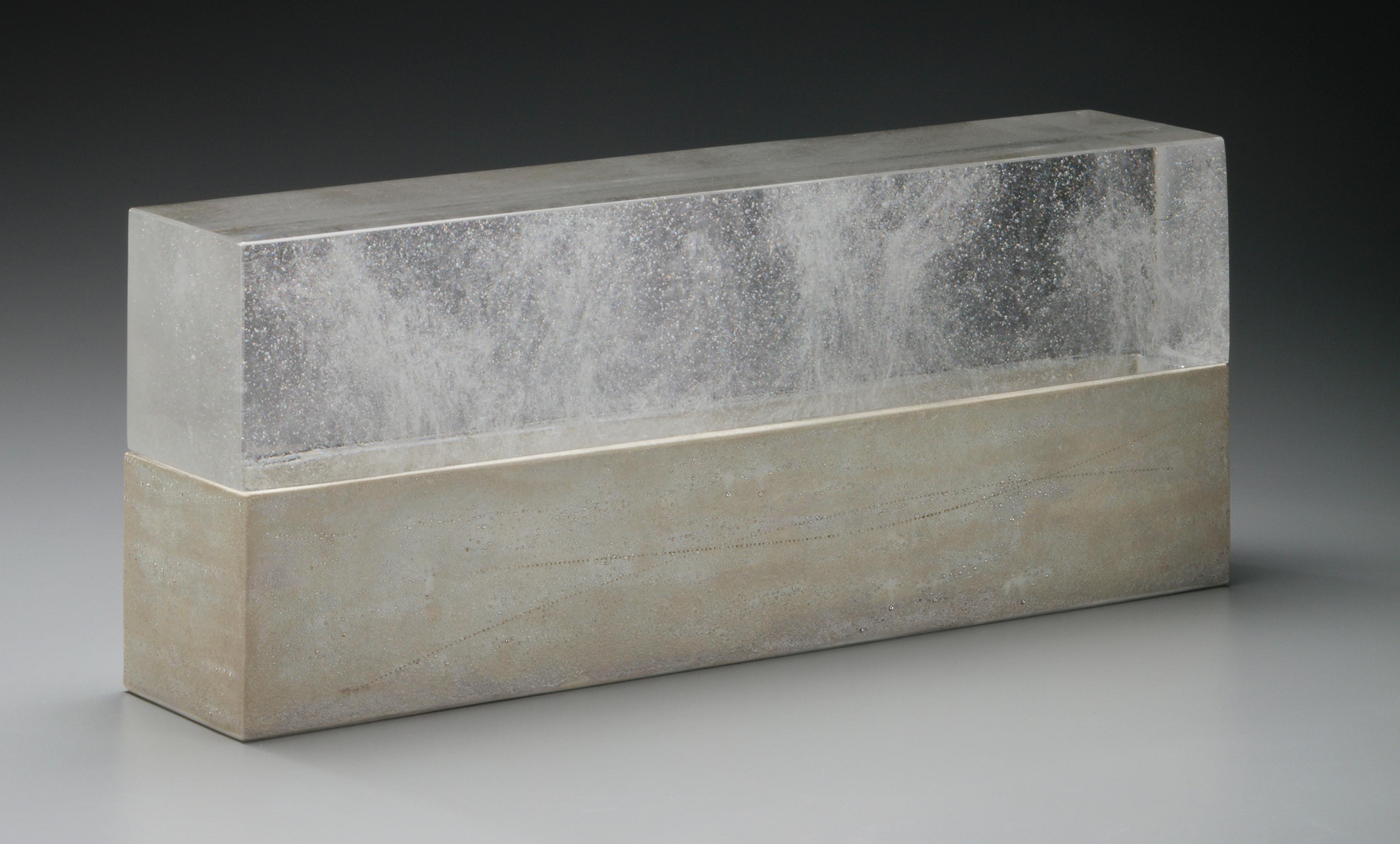
He arrived at his two signature elements, mist glaze and cast glass, as the result of a quest to create the effect of water from fire. The technology to create glazed ceramics (and glass) is wonderfully counterintuitive: it takes elements dug up from the earth, introduces them to very high temperatures in kilns, and produces something cool, smooth, and often pure white or brightly colored. In the process, dirt is turned into something like a gemstone. Takahiro takes this amazing transformation even further, making soil look like water or ice.
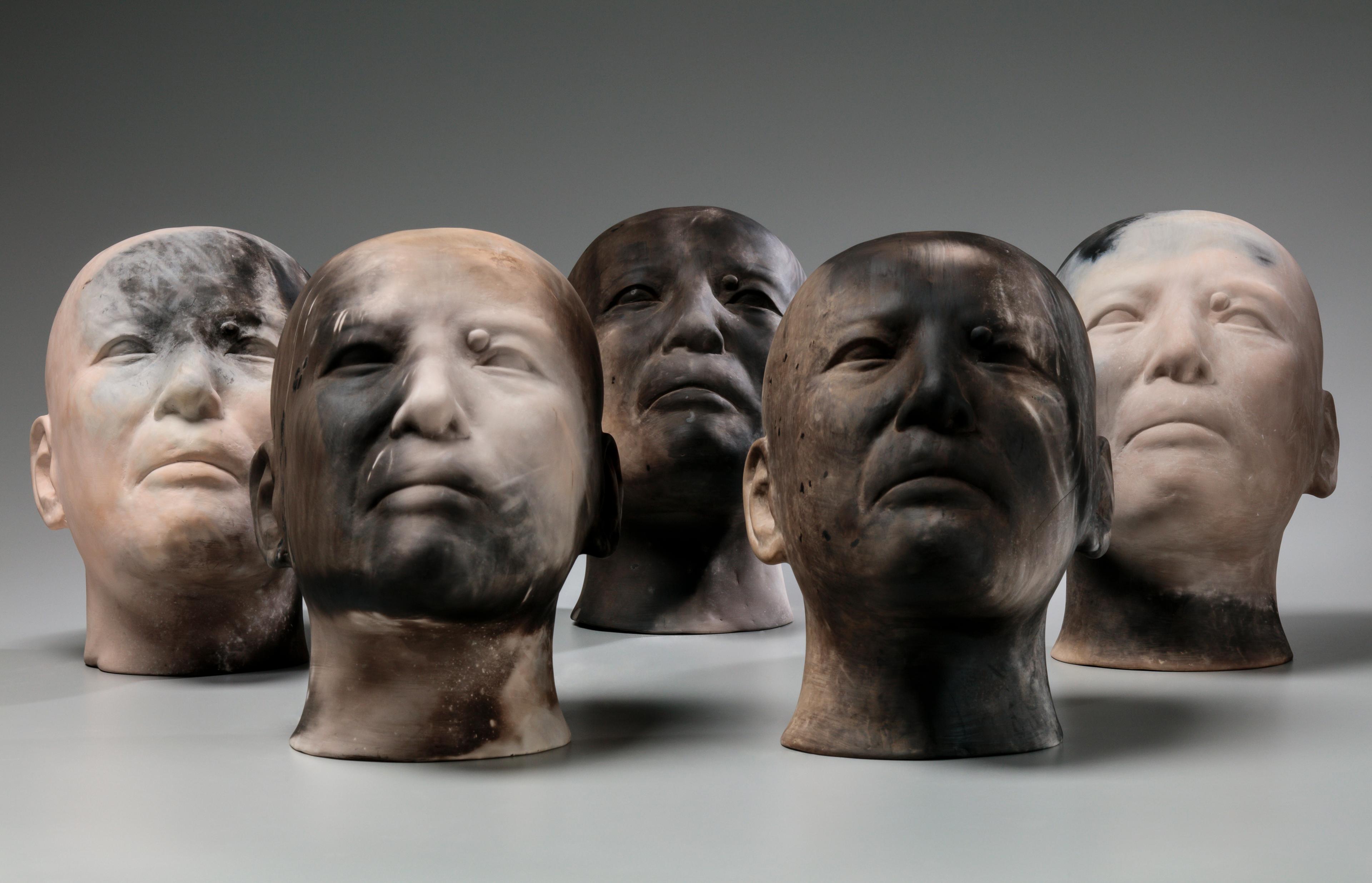
As he approached 50, Takahiro started making casts of his own head, taking his work in a new, very personal direction. He was thinking about moving on from ceramics and treated the heads as a kind of career retrospective, finishing them with all the techniques and styles that he had used over the years. One particularly potent group of heads was fired using an ancient technique in which the clay objects are placed in a pit beneath a pile of green branches, which are lit for a slow, smoky burn. Takahiro has spoken about the experience of retrieving the heads from the ashes as a kind of rebirth; they do feel as though they are looking up, toward something higher.
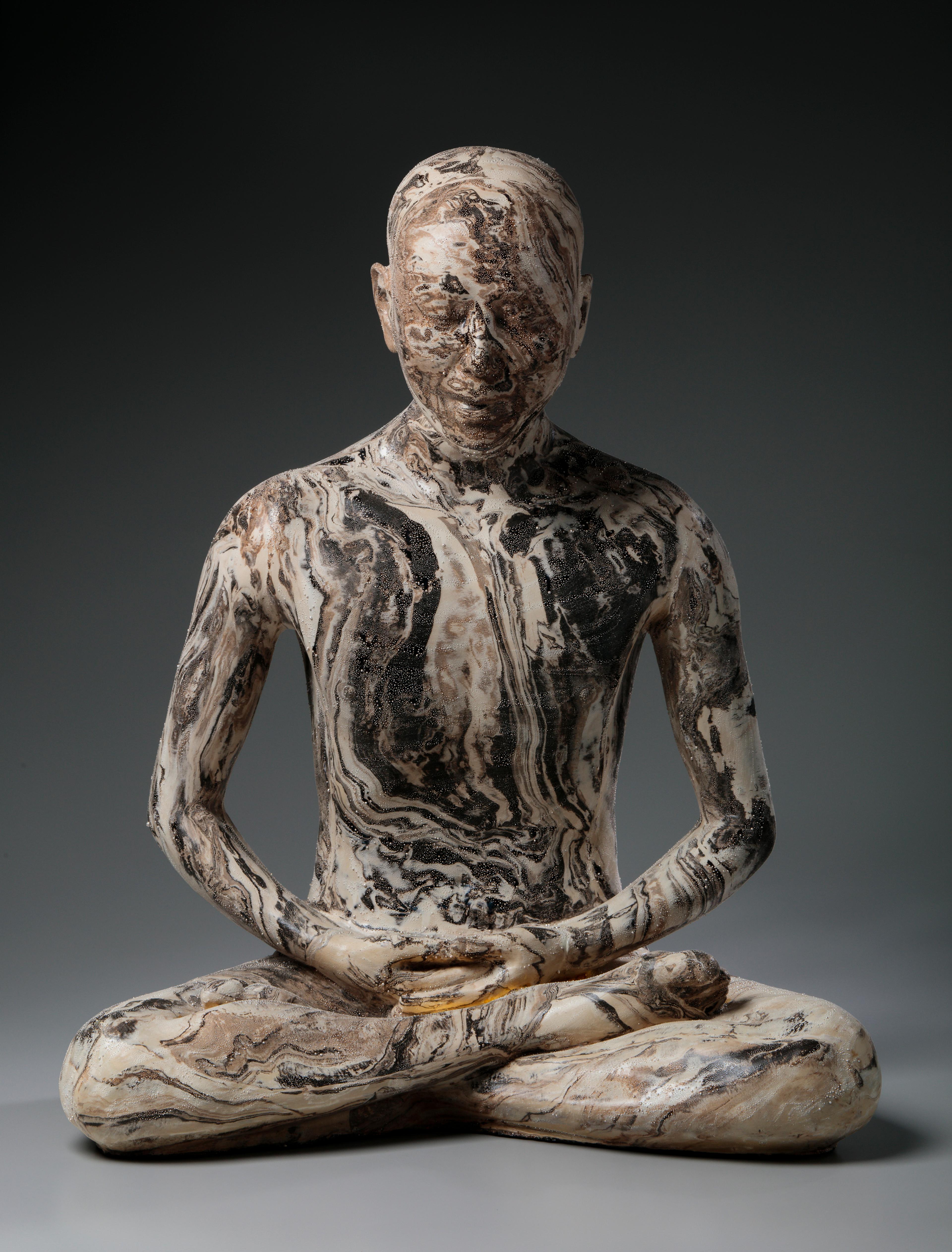
The most dramatic piece in the show, titled Reduction: Wave, is based on a full body cast of the artist, seated in a meditative position that recalls Buddhist figures. It is made from marbled clay: black and white porcelain kneaded together. Takahiro started using this technique in response to the horrors of the earthquake, tsunami, and subsequent nuclear disaster that hit northeastern Japan in 2011. The swirling clay evokes the chaos of the tsunami. “Reduction” comes in part from the shrinkage that any clay piece experiences when it loses moisture during firing (more noticeable when the clay object is one’s own body). But the artist also uses it to describe humanity as he sees it today: reduced in vision and compassion, living in a world that is reduced by pollution and overdevelopment. The figure’s introspective posture suggests a spiritual search, possibly looking for a solution, guidance, or redemption.
This particular Reduction figure has a repair to its lap (just visible under the hands in this photo) that was made in the traditional Japanese method known as kintsugi. Usually used on broken vessels, kintsugi involves reattaching the pieces with plant-based lacquer, then covering the lacquer with gold or silver. Rather than hiding the break and trying to restore the piece to what it once was, kintsugi highlights the change. Sometimes the repair is considered an improvement, adding visual and textural interest—like lightning in a night sky or laugh lines on a face. The kintsugi on this figure was necessary to stabilize a break, but it brings a note of hope to the piece: maybe we can be repaired, too, and maybe we will be better for it.
Joan Cummins is the Lisa and Bernard Selz Senior Curator of Asian Art at the Brooklyn Museum.
